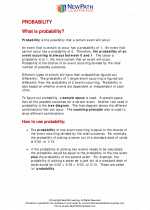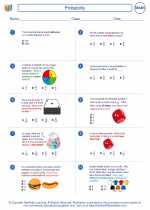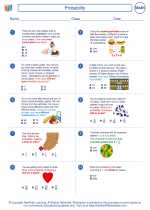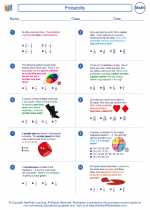Odd Numbers
Odd numbers are integers that are not divisible by 2. In other words, when an odd number is divided by 2, there is always a remainder of 1. The set of odd numbers includes the numbers 1, 3, 5, 7, 9, and so on.
Properties of Odd Numbers:
- Every odd number can be represented in the form 2n + 1, where n is an integer.
- The sum of two odd numbers is always an even number.
- The difference between two odd numbers is always an even number.
- Multiplying two odd numbers always results in another odd number.
Identifying Odd Numbers:
To determine if a number is odd, divide it by 2. If there is a remainder of 1, the number is odd. For example, when 11 is divided by 2, the quotient is 5 with a remainder of 1, so 11 is an odd number.
Practice Problems:
- Determine whether the following numbers are odd or even: 16, 25, 37, 42, 53.
- Find the sum of the first 5 odd numbers.
- If x is an odd number, what can you say about the value of 2x?
Answers:
- 16 is even, 25 is odd, 37 is odd, 42 is even, 53 is odd.
- The first 5 odd numbers are 1, 3, 5, 7, 9. Their sum is 25.
- 2x is always even, because multiplying any number by 2 results in an even number.
Now that you understand the concept of odd numbers, try solving more problems and practice identifying odd numbers in different sets of integers.
.◂Math Worksheets and Study Guides Sixth Grade. Probability
Study Guide Probability
Probability  Worksheet/Answer key
Worksheet/Answer key Probability
Probability  Worksheet/Answer key
Worksheet/Answer key Probability
Probability  Worksheet/Answer key
Worksheet/Answer key Probability
Probability 

 Worksheet/Answer key
Worksheet/Answer key
 Worksheet/Answer key
Worksheet/Answer key
 Worksheet/Answer key
Worksheet/Answer key

The resources above cover the following skills:
Statistics and Probability (SP)
Develop understanding of statistical variability.
Recognize a statistical question as one that anticipates variability in the data related to the question and accounts for it in the answers. For example, “How old am I?” is not a statistical question, but “How old are the students in my school?” is a statistical question because one anticipates variability in students’ ages.
Ability to introduce and develop statistical reasoning.